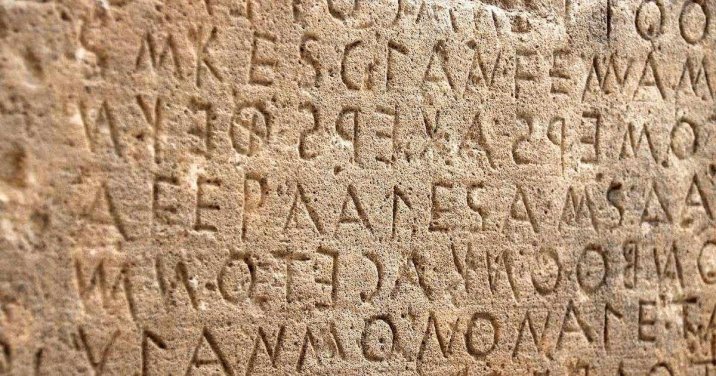Just in case you were wondering, Greek is different from English. But it’s not just the words that differ, there are also different preferences about how to get certain jobs done. These differences often result in a mismatch, where English won’t allow you to do something with a participle that would be perfectly natural in Greek. No worries, it just means that we need to find some means of mapping the information across other than a literal translation. This is where the Lexham High Definition New Testament (HDNT) and Lexham Discourse Greek New Testament (LDGNT) come in. These resources utilize a custom markup scheme to help you understand what each part of the verse is doing, regardless of how it is translated.
Let’s take a look at one of my favorite things: participles! These are the verbs in English that mostly end in –ing, like hiking, biking and eating. Basically, participles let you talk about an action as though it were a thing. Because of the mismatch is usage between Greek and English, Greek participles often get translated as though they were a main action. It doesn’t sound like a big deal until you understand what their main purposes are. The participles the precede the main action de-emphasize or background the action compared to the main action. This allowed the biblical writers to keep the spotlight on the main action while still mentioning other things that happened. If you lose the participle, then you lose the focus of the writer’s spotlight.
The HDNT and LDGNT use grayscale to make sure that the backgrounded actions can be clearly seen. This graphic representation lets you see at a glance what each part of the discourse is doing, regardless of how it is translated.
Paul has only one big idea in this whole section: God making us alive with Christ. All of the rest is set-up so that we understand all that was going on when he did this. We were dead in our sins, but God was rich in His mercy even though we were walking in disobedience. This is very important information, or Paul would not have included it. But in the big scheme of things, it is intended to set the stage for his one main thought. To try and keep all of the Greek complexity in a readable English translation is just not possible. But having all of the background information translated as though it was the main action can distract us from clearly seeing where Paul’s spotlight is focused, making us lose focus on the big idea.
The HDNT and the LDGNT help bridge the divide, making sure your focus stays sharp. They do this not just with the graphics, but also with the block outline. This simple outline enables you to clearly see the flow of the text while still reading it in its original order, unlike traditional diagrams. The participles that precede the main action are labeled Circumstance in the left column, whereas the ones the follow the main action are labeled Elaboration. These other participles spell out what the main action looks like in practice. In v. 3, living in the passions of our flesh is elaborated upon as carrying out the desires of the body.
The goal of the HDNT is to help those who aren’t comfortable working in Greek to identify significant discourse devices are used by the writers and to understand their significance. For those who want more detail, the LDGNT provides much more, including analysis of word order to help you better understand the structuring of passages and much more.
The LDGNT comes with all of the HDNT resources bundled in the same package.
For those interested in learning more about participles, especially how the uses I describe mesh with more traditional approaches to grammar, check out the Discourse Grammar of the Greek New Testament book or teaching videos. There is a whole chapter devoted to the topic, beginning with how grammarians like Wallace, Robertson, BDF, and others have treated the issue.
If you want to skip the detail and jump right to the exegetical conclusions, take a look at the High Definition Commentaries. The Philippians volume is in process, to be followed by Romans. This isn’t your standard commentary, as it focuses exclusively on talking you through the flow of the text, providing custom graphics to help you communicate your message in a sermon or Bible study.






